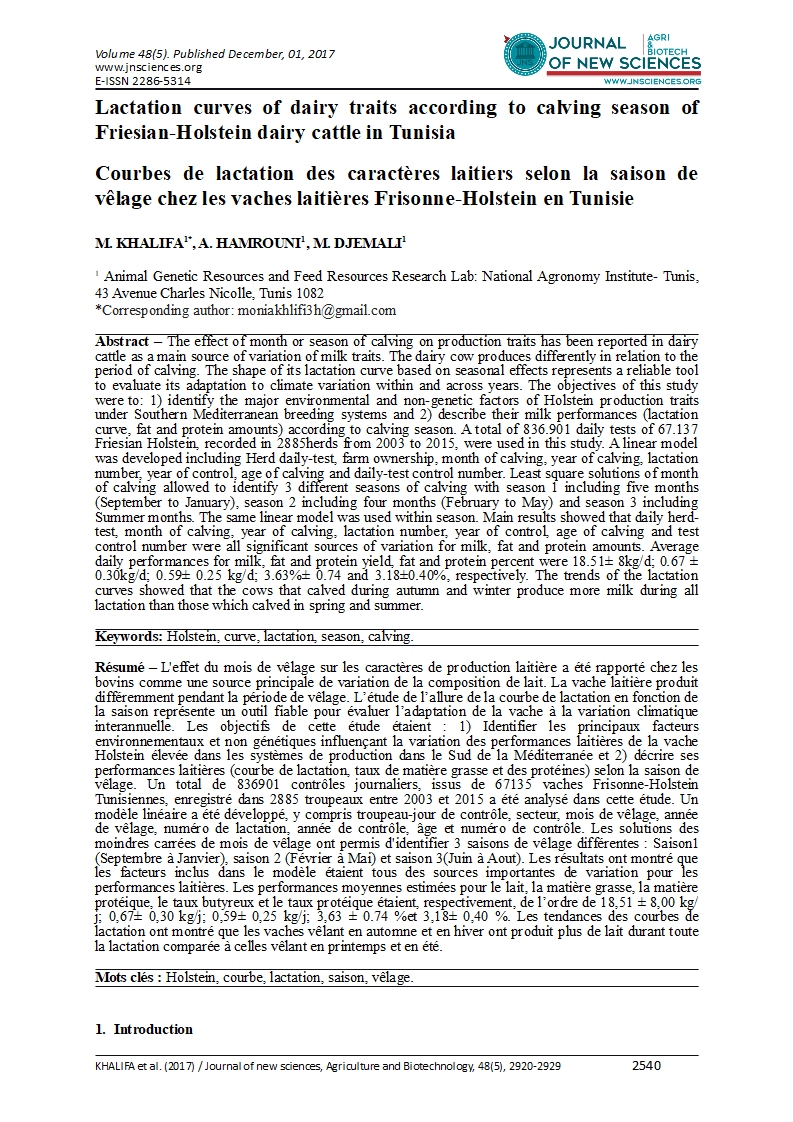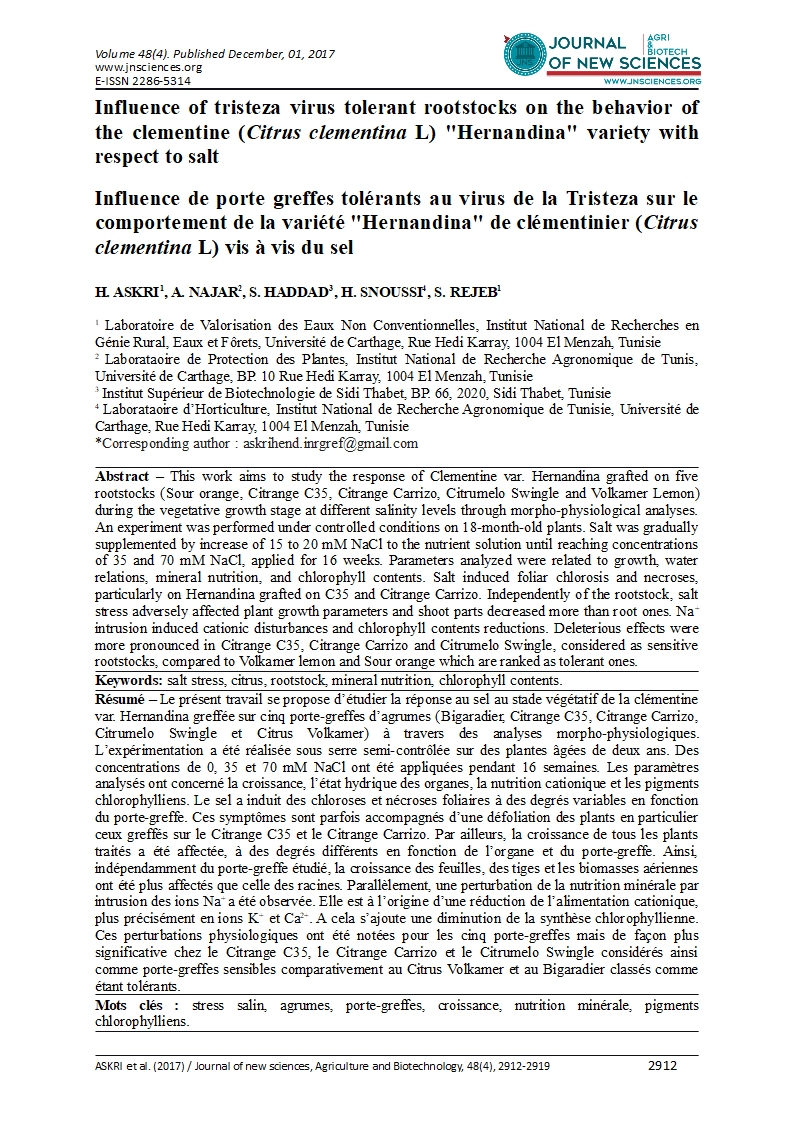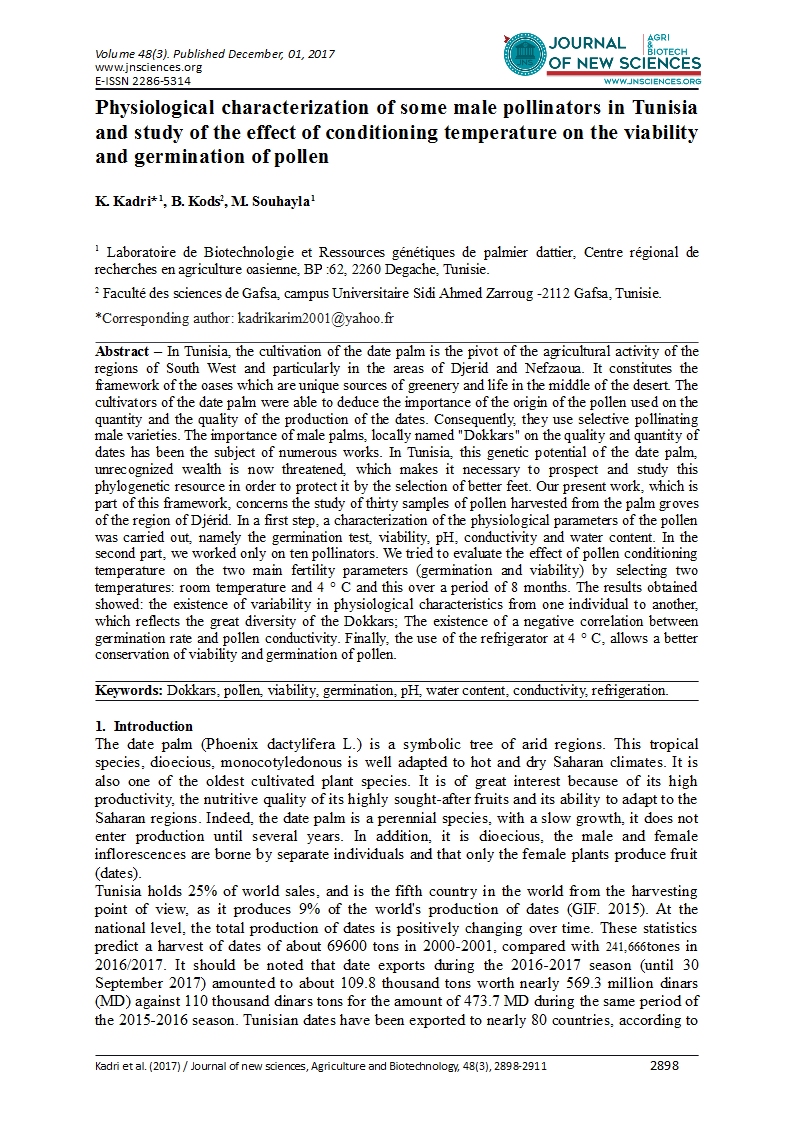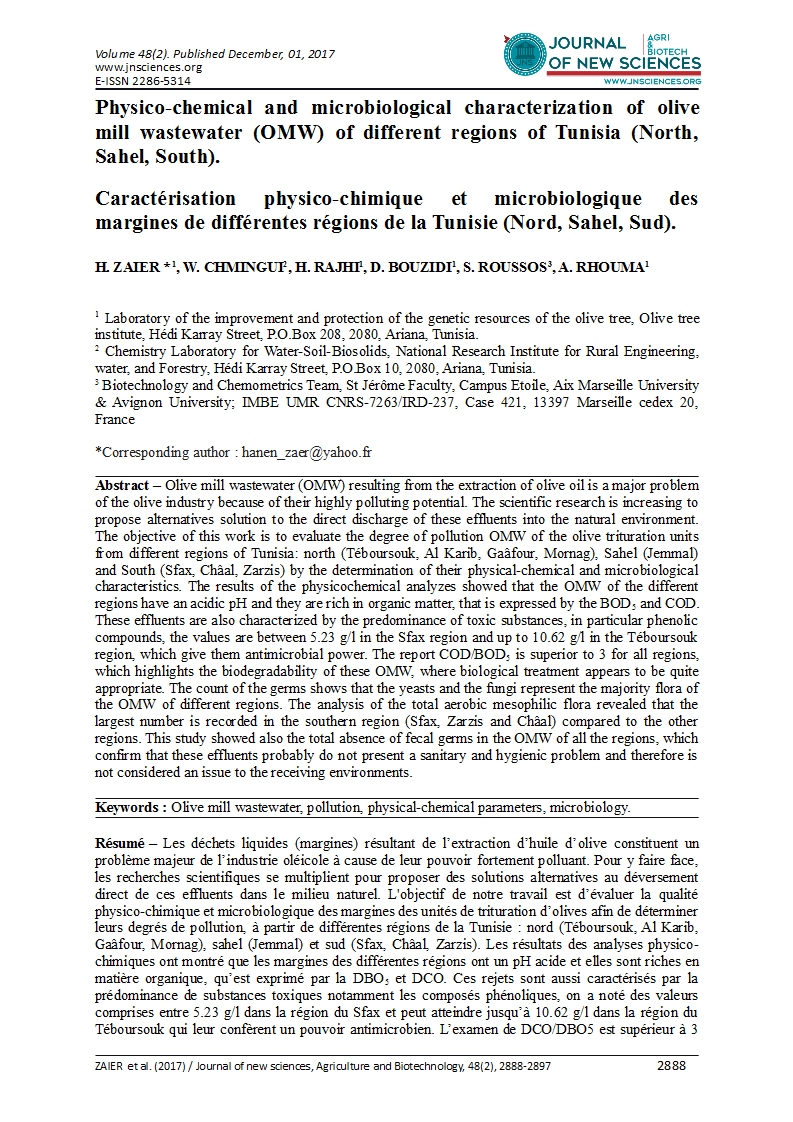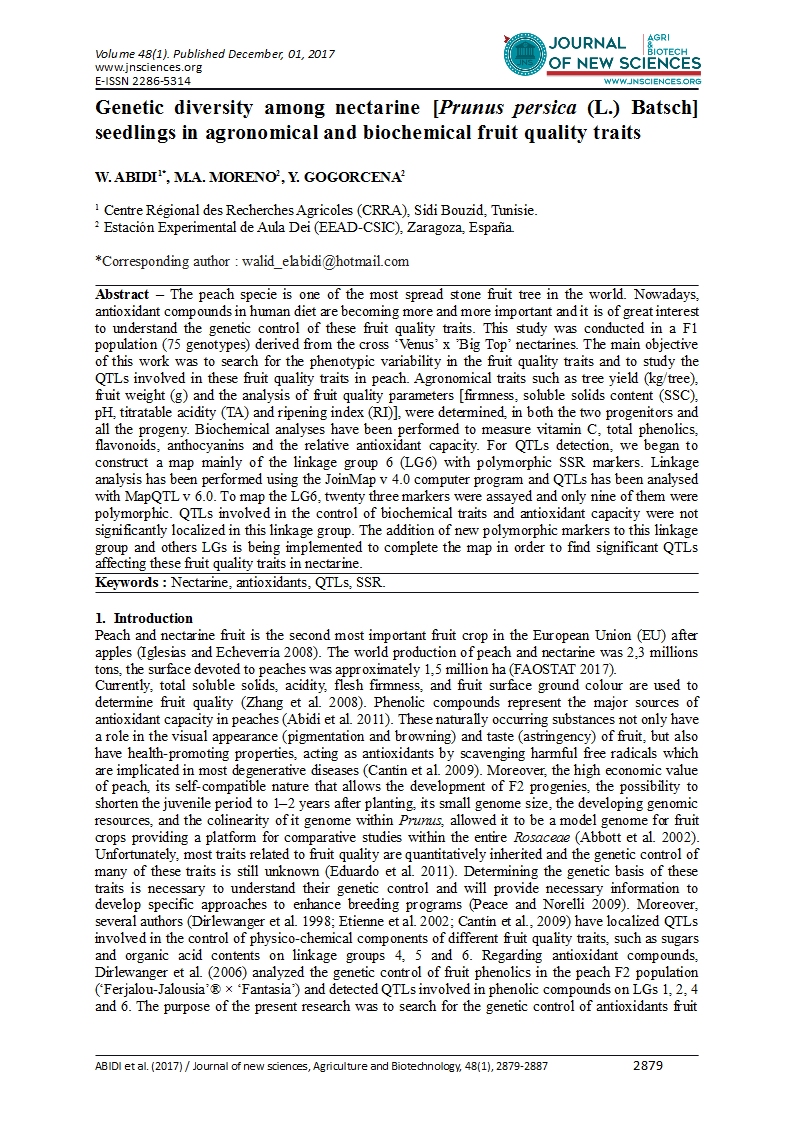- Category: Volume 48
- Hits: 4738
Growth and early survival seedling of zeen oak under shade and moderate drought: comparative study of two provenances
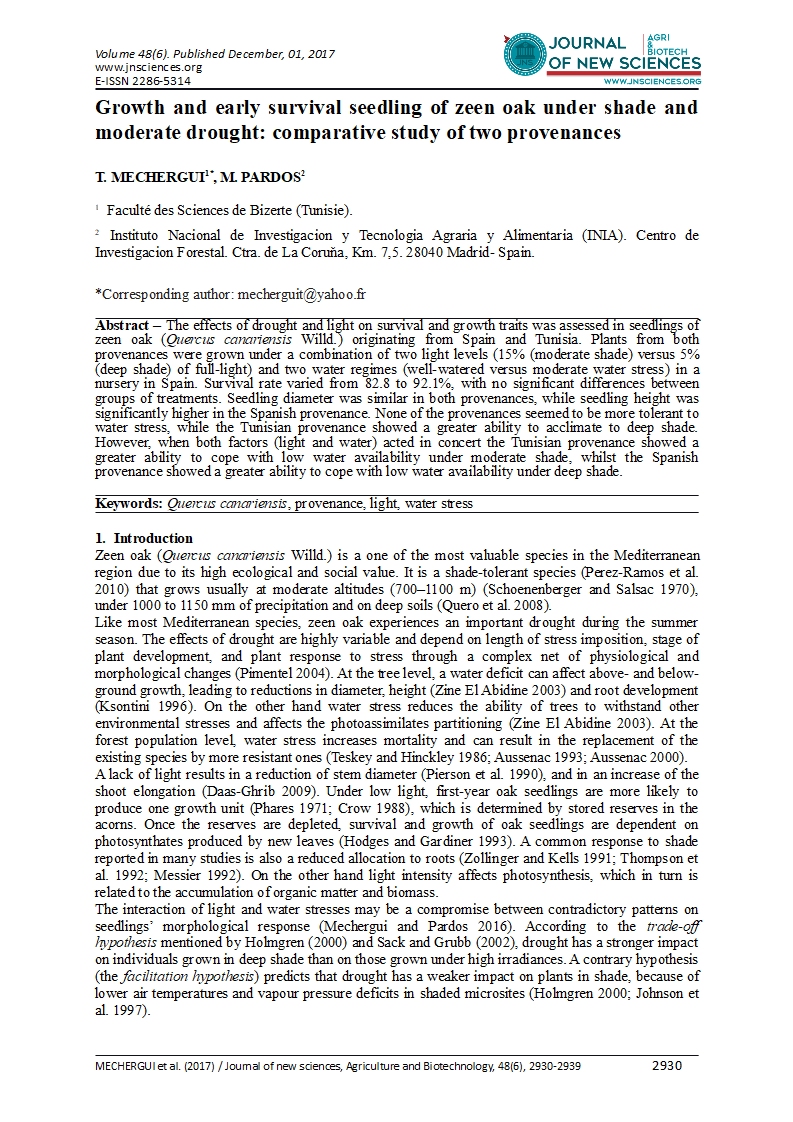
T. MECHERGUI1*
M. PARDOS2
1 Faculté des Sciences de Bizerte (Tunisie).
2 Instituto Nacional de Investigacion y Tecnologia Agraria y Alimentaria (INIA). Centro de Investigacion Forestal. Ctra. de La Coruňa, Km. 7,5. 28040 Madrid- Spain.
Abstract – The effects of drought and light on survival and growth traits was assessed in seedlings of zeen oak (Quercus canariensis Willd.) originating from Spain and Tunisia. Plants from both provenances were grown under a combination of two light levels (15% (moderate shade) versus 5% (deep shade) of full-light) and two water regimes (well-watered versus moderate water stress) in a nursery in Spain. Survival rate varied from 82.8 to 92.1%, with no significant differences between groups of treatments. Seedling diameter was similar in both provenances, while seedling height was significantly higher in the Spanish provenance. None of the provenances seemed to be more tolerant to water stress, while the Tunisian provenance showed a greater ability to acclimate to deep shade. However, when both factors (light and water) acted in concert the Tunisian provenance showed a greater ability to cope with low water availability under moderate shade, whilst the Spanish provenance showed a greater ability to cope with low water availability under deep shade.
Keywords: Quercus canariensis, provenance, light, water stress

